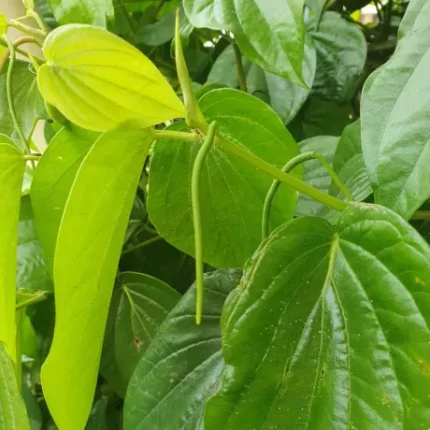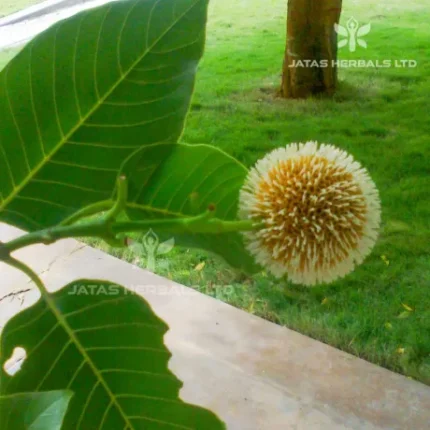Pista is mentioned with name abhisuka in the brhat trayi works. It is described as an north Indian tree by the commentators.
Botanical description – This tree was native of Syria but will grow well in India. Pistachio grows up to a height of 30’, has pinnate leaves and nuts containing ighan is characteristic..
Part used – seed kernal or seed – raw or cooked. The seed is rich in oil and has a pleasant mild flavour. It is very nice when eaten raw and is also widely used in confectionery, ice cream, cakes, pies etc. An edible oil is obtained from the seed but is not produced commercially due to the high price of the seed. The seed yields up to 40% of a non-drying oil. The fruits can be made into a flavourful marmalade.
The plant is used in China for the treatment of abdominal ailments, abscesses, amenorrhoea, bruises, chest ailments, circulation, dysentery, gynecopathy, pruritus, rheumatism, sclerosis of the liver, sores and trauma.
Male trees yield a small quantity of a high grade resin. It is used in paints, lacquers etc.
Uses – This is famous as pista tree. The nuts were reported to be sedative and tonic by R.N.Chopra.
- vera was first cultivated in Western Asia. It reached the Mediterranean world by way of central Iran, where it has long been an important crop. Although known to the Romans, the pista nut appears to reach the Mediterranean or most of the Near East before medieval times. More recently pista has been cultivated in California (in 1976) and Australia. The word pistachio is a Persian loanword, coming into English through Italian, and is a cognate to the Modern Persian word ‘Peste’.
Chemical constituents – The constituents of the Ohadi variety of pistachio nuts of Kerman, Iran are determined. It is found that the general mineral composition of this variety is about the same except for the higher Ca content and the presence of high Na and Mg which is not reported elsewhere. The comparison of the organic constituents also shows a general similarity but it is observed that the fatty acid composition of the oil is quite different e.g., oleic acid is less (49.5 vs 69.6%) whereas palmitic and linoleic acids are more (13.4 vs 8.2% and 31.8 vs 19.8% respectively). Although the amino acid composition is somewhat similar, it was observed that arginine, lysine and cystine content are more than the literature values (E. HOSSEINI SHOKRAII, 1977).
The chemical composition of the fruits of the north ighantu ecotype Pistacia atlantica subsp. Atlantica was determined and compared to other fruits of different species in the genus growing in south Algeria and other Mediterranean regions. These fruits were analyzed for their dry matter, protein, crude oil, ash, fatty acids, and phytosterol content. The main fatty acids identified by gas chromatography were oleic (54.15%), linoleic (28.84%), and palmitic (12.21%) acids. The fruits of the north ecotype were found to be rich in protein, oil, fiber, and unsaturated fatty acids, suggesting that they may be valuable for food uses. The sterols isolated were campesterol, stigmasterol, β-sitosterol, and Δ5-avenasterol with β-sitosterol as the major constituent (85%±0.85). The biochemical data indicated an elevated MUFA rate (∼56%) in ighantu oil which may be important against certain pathologies for its nutritional and preventive virtues (H. Benhassaini, M. Bendahmane and N. Benchalgo, 2006).
Research – The kernels are often eaten whole, either fresh or roasted and salted, and are also used in ice creams and confections such as baklava. In July 2003, FDA approved the health claim specific to nuts lowering the risk of heart disease. In one of the studies at Pennsylvania State University, pista significantly reduced LDL and also acute stress reaction (April 2007). In June 2007 a study on the cardiovascular health benefits of eating pista was reported.
On the Greek island of Chios, the husk or flesh of the pistachio fruit surrounding the shell is cooked and preserved in syrup, a spoonful of which would traditionally be offered as a sweet delicacy to guests.
The shell of the pista is naturally a beige colour. Roasted pista nuts turn naturally red if they are marinated prior to roasting in a salt and strawberry marinade, or salt and citrus salts.
The trees are planted in orchards, and take approximately seven to ten years to reach significant production. Production is alternate bearing or biennial bearing (harvest is heavier in alternate years). Peak production is reached at approximately 20 years. One male tree produces enough pollen for eight to twelve nut-bearing females.






Reviews
There are no reviews yet.